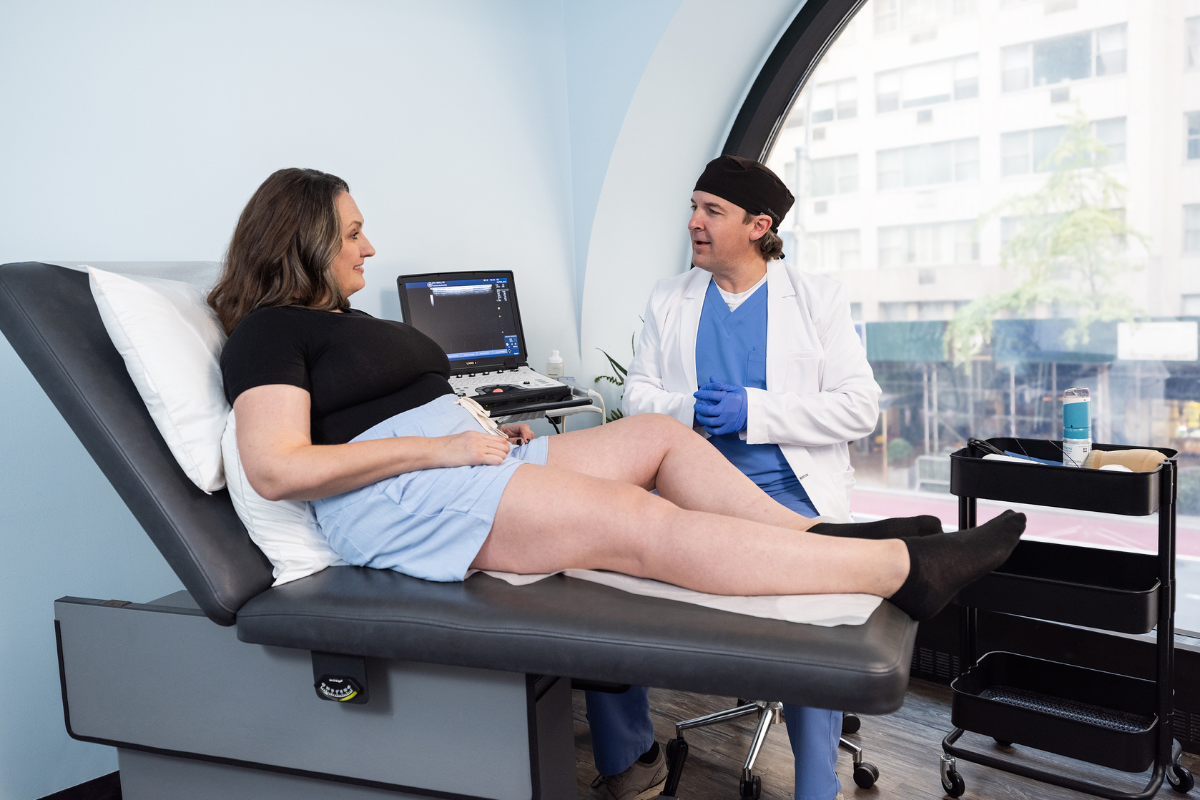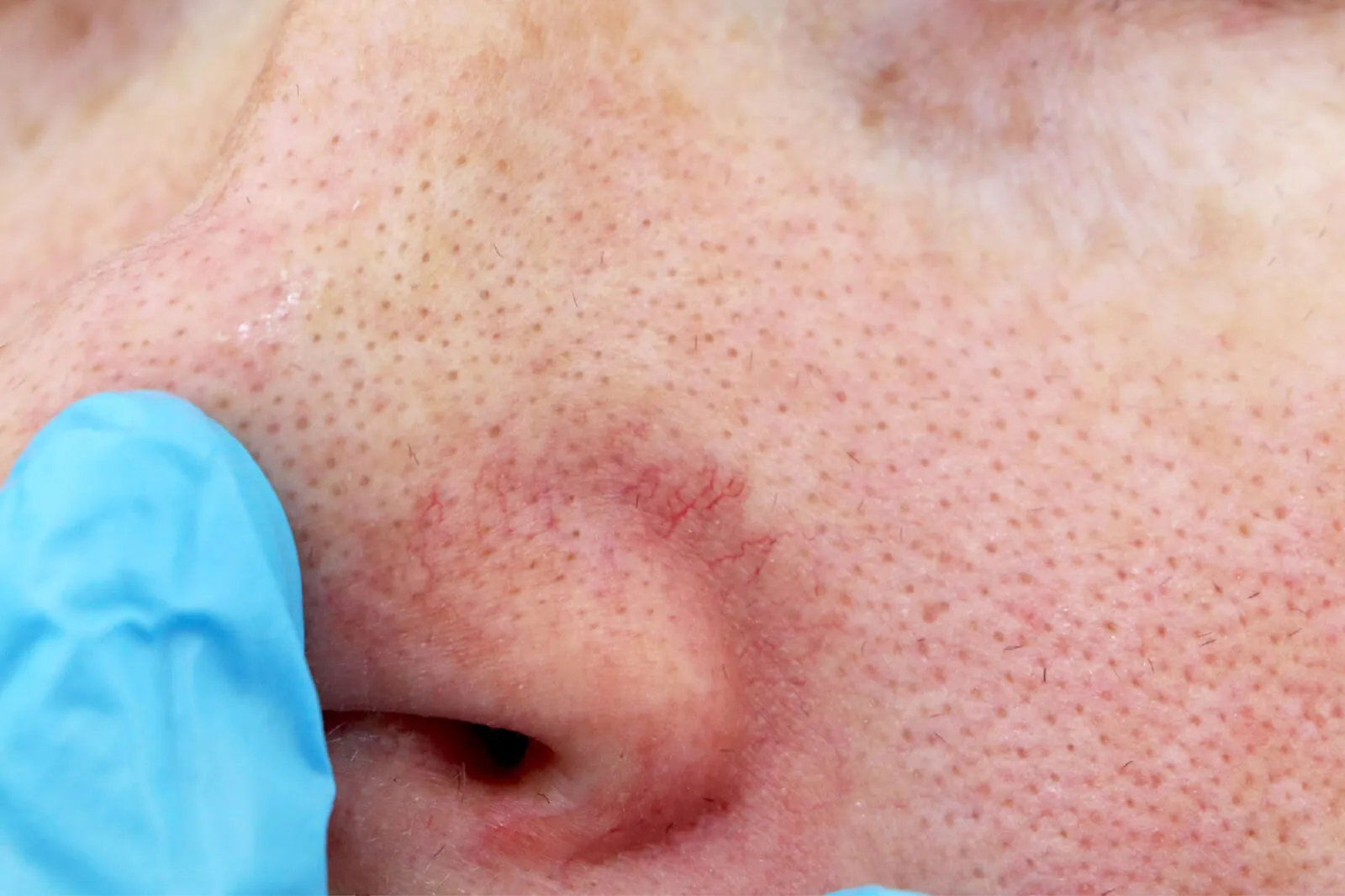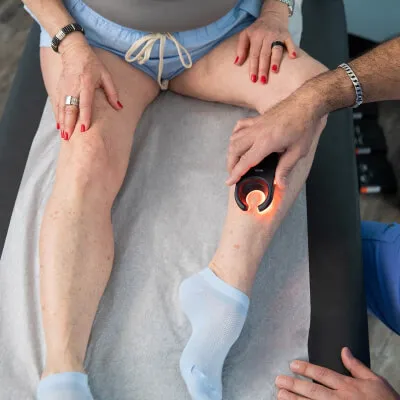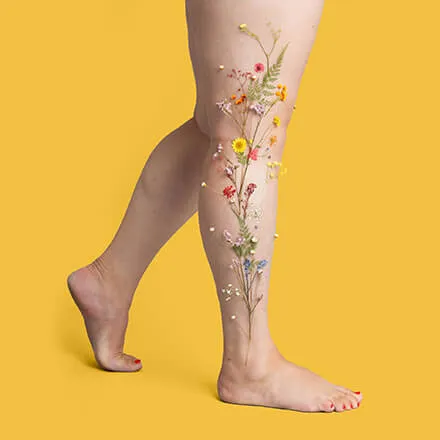Visible facial spider veins are very common as we age. They are usually only a cosmetic concern and not cause for alarm, but why do they appear? Are there ways to prevent them? How can you treat facial spider veins? Keep reading to learn more!

Understanding Facial Spider Veins
Spider veins on the face, also known medically as telangiectasia, are small, dilated blood vessels visible near the skin's surface. They appear as thin red, blue, or purple lines, often on the cheeks and nose. These veins can be caused by factors like sun exposure, aging, genetics, and rosacea. Treatments include laser therapy and sclerotherapy.
Broken blood vessels tend to appear on areas of thinning skin, and our faces have some of the most delicate, sensitive, and papery skin on our entire body. Because of the thinness of the skin around our eyes, nose, cheeks, and on our eyelids, as well as near-constant sun and weather exposure on our faces, this skin is particularly susceptible to developing broken capillaries and blood vessels.

How to Prevent Veins on the Face
The most important thing to remember about spider veins on the face, or broken blood vessels on the cheeks and nose, is that they are usually just a harmless "side effect" of aging. Living a life in the sun, wind, and rain eventually shows on our bodies, and may be an unavoidable part of aging depending on your personal predispositions. Genetics play a large role in how our bodies change with time, so if you have family members with broken blood vessels on their faces, it may indicate that you, too, could develop visible pigmentation on your face. This is not always the case, as certain preventative measures can lessen the odds of developing spider veins on the face.
- Avoiding direct sun exposure (without proper protection) is the strongest way to take care of the delicate skin on your face. Wearing sunscreen or other SPF products of (minimum) 50 rating has been proven to prevent and reduce the visible signs of aging and protect against some skin cancers.
- Reducing alcohol consumption protects your liver from damage that can result in skin conditions, and decreases the likelihood of broken blood vessels in the face. Alcohol is a vasodilator when consumed at moderate levels, meaning it expands your veins, but at high intake levels, it acts as a vasoconstrictor and tightens the veins. This increases pressure and leads to redness in the face or broken blood vessels in some people who are heavy drinkers.
- Do not use corticosteroids for more than the prescribed time frame. Those dealing with chronic skin conditions such as eczema or psoriasis may be prescribed topical steroids, which decrease the symptoms of the conditions but weaken and thin skin with extended use. Speak with your prescribing doctor about the best practices for using your topical steroids.

What Are the Risk Factors for Developing Spider Veins on the Face?
There are many genetic factors that cause predisposition to developing broken blood vessels on the face and/or facial spider veins. Some, like having a certain autoimmune disease, are outside of our control. Others, like drinking responsibly or tanning, can be adjusted to help decrease the risk of developing visible veins on the face. Common risk factors include (but are not limited to):
- Pregnancy
- Age (over 50)
- Long periods of sitting or standing (poor circulation)
- Working in the sun and/or not wearing sunscreen daily
- Alcoholism or regular consumption of alcohol
- Rosacea
- Lupus
- Scleroderma (an autoimmune connective tissue disorder)
- Dermatomyositis (weakened muscles and rashes on the skin)
Having any of the above conditions does not guarantee you will develop spider veins on your face or that you will experience broken blood vessels on the face. Nor does it necessarily mean visible veins on the cheeks, eyelids, or nose are caused by one of the above conditions. The best way to find out why you may see broken vessels on your face is to consult a dermatologist who specializes in facial vein treatment.

Who Can Help
Our vein specialists primarily treat chronic venous insufficiency or varicose and spider veins in the legs. Most vein disorders originate in the great saphenous vein, which is deep in the thigh and travels the entire length of our legs.
The best physician to consult for concerns about the face is a board-certified dermatologist. These specialists treat conditions affecting the surface of the skin, including the sensitive and thin skin of the face. Dermatologists may assess you for chronic conditions that could worsen your skin, such as eczema, psoriasis, systemic lupus erythematosus, or other skin rashes.

Treatments for Facial Veins
To get rid of spider veins on the face, laser treatments are the most effective option. Lasers like Vbeam and IPL target and destroy the blood vessels, causing them to fade. Other treatments include sclerotherapy and chemical peels, which can also help reduce the appearance of facial spider veins.
While our team of vein doctors do offer sclerotherapy as a spider vein treatment for the legs, we focus on the legs only as a means of treating underlying causes, such as chronic venous insufficiency. Our specialists perform ultrasound-guided sclerotherapy on both spider veins and smaller varicose veins in the legs, feet, and ankles, but do not treat veins on other body parts (including the face) as they may be caused by autoimmune or other skin-specific issues rather than issues within the veins themselves. Other varicose vein and spider vein treatment options, such as radiofrequency ablation, endovenous laser ablation, varithena, VenaSeal, and excel V+ laser are not recommended (or possible) to be used on the face.
Your best option in seeking treatment (and answers) is to consult a dermatologist to make sure all bases are covered and that you'll receive specialized care for your area of concern on the eyelids, cheeks, nose, or other parts of the face.

If you are experiencing spider veins or other venous concerns on your legs, our team of vein specialists in New York, New Jersey, Connecticut, Michigan, and Texas are happy to help. To schedule your free vein consultation, or to discuss insurance coverage with our patient care team, give us a call at 866-353-4930.

Metro Vein Centers Editorial Team
From vein care 101 to treatments, the Metro Vein Centers blog offers patients everything they need to know about vein health.

Trusted insight from the nationally accredited, board-certified vein doctors at Metro Vein Centers.







